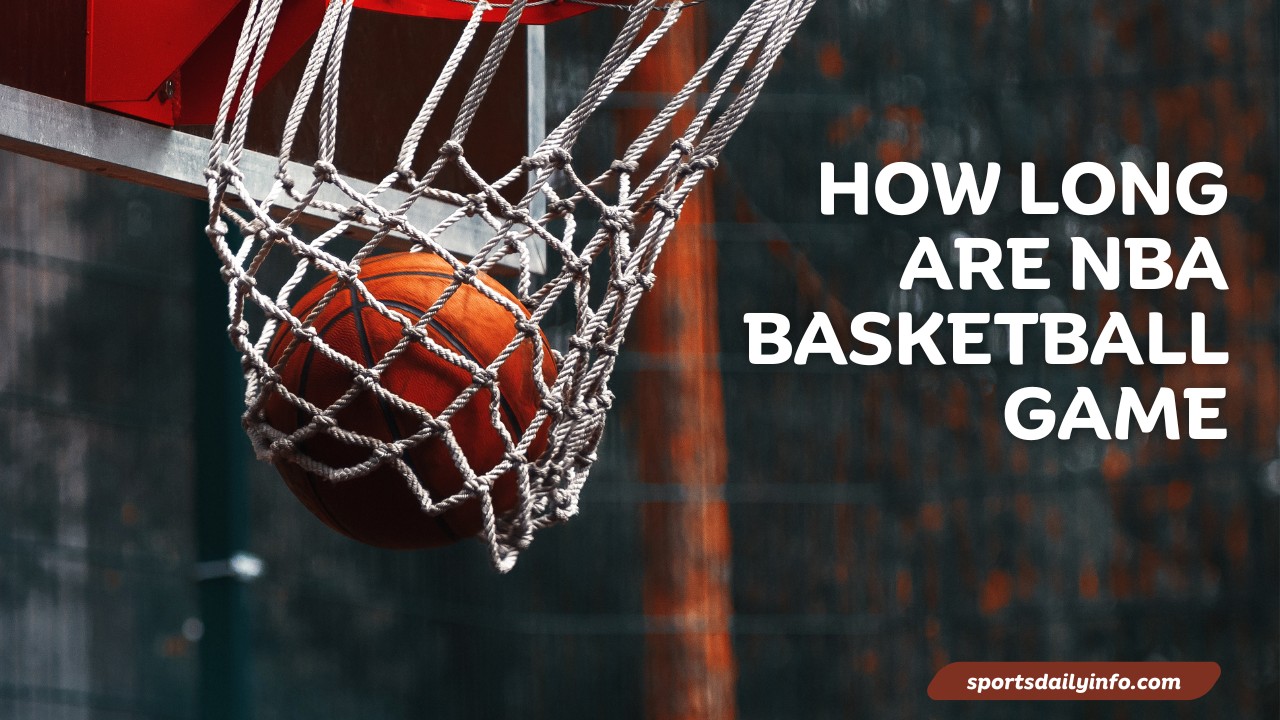As a basketball analyst with years of experience covering NBA games, I’ve seen the sport evolve both on the court and on the screen. Back in the day, if you missed a game on cable, that was it—you’d wait for the highlights or catch the recap on the news. But now? We’ve got apps, websites, streaming platforms, and even social media showing live plays seconds after they happen.
I’ve tried almost every way to watch an NBA game—cable, satellite, mobile streaming, even sitting courtside at Madison Square Garden. And trust me, not all viewing options are created equal. Some are smooth and crystal clear, while others leave you dealing with blackouts, lag, or crazy subscription fees. That’s why I wanted to put together a simple guide—one that helps real fans, like you, catch every dunk, buzzer-beater, and fast break without the stress.
Whether you’re a die-hard supporter trying to follow every game, or someone who just wants to watch the playoffs without a cable subscription, this guide will help. I’ll walk you through the best ways to watch NBA games—official channels, mobile apps, budget options, and a few tricks I’ve learned along the way.
Let’s make sure you never miss another tip-off again.
Contents
- 1 Global Popularity: Soccer is the World’s Game
- 2 Accessibility: Anyone Can Play Soccer
- 3 Simplicity of the Rules
- 4 Fewer Injuries, More Playtime
- 5 Soccer Is More Inclusive Across Genders and Ages
- 6 Cultural and Emotional Impact
- 7 Fitness and Endurance Benefits
- 8 Soccer’s Simpler Broadcasting and Viewer Experience
- 9 FAQs – Clearing Common Doubts
- 10 Conclusion: Why I Believe Soccer Wins the Battle
Global Popularity: Soccer is the World’s Game

I remember the first time I watched a soccer match outside my home country. The crowd was massive, loud, and full of energy. That’s when it hit me—soccer isn’t just a sport, it’s a global language.
Soccer is played in every corner of the world. From the streets of Rio to the fields of Nairobi, kids grow up dreaming of becoming soccer stars. In fact, over 250 million people play soccer worldwide, making it the most played and watched sport on Earth. (FIFA Official Report)
Compare that to American football. While it’s huge in the U.S., its reach is mostly limited. Outside North America, football is often seen as a niche sport. Even the biggest NFL games can’t match the viewership of the FIFA World Cup, which draws billions of fans across the globe. (Statista – World Cup Viewership)
What’s also amazing is how soccer brings people together. You don’t need to speak the same language. You don’t even need to know the players. You just feel the energy, the pride, the passion.
Global Popularity Comparison – Soccer vs Football (Fans, Countries, Tournaments)
| Category | Soccer | Football (American) |
| Estimated Global Fans | 4+ Billion | 400+ Million |
| Countries Where It’s Played | 200+ Countries | Mainly USA + Limited International |
| Most-Watched Tournament | FIFA World Cup (3.5B+ viewers) | Super Bowl (115M viewers) |
| Olympic Sport | Yes (Since 1900) | No |
| Professional Leagues | 100+ Global Leagues | Mostly NFL + NCAA |
📌 Note: Data reflects the most recent available stats as of 2024 and is based on official reports from FIFA, Nielsen, and Olympic records.
Accessibility: Anyone Can Play Soccer
One thing I love about soccer is how easy it is to start. You don’t need fancy gear or even a real field. I’ve played with plastic bottles for balls and bricks for goalposts. It still felt like magic.
All you need is a ball. That’s it. No helmets, no shoulder pads, no expensive uniforms. This makes soccer super affordable, especially in places where money is tight. That’s a big reason why soccer is the top sport in many developing countries. (UNICEF – Soccer and Youth Development)
Football, on the other hand, comes with a price. Gear alone can cost hundreds of dollars. You need helmets, pads, cleats, and a full team to even start a game. Not to mention access to a proper field.
Soccer’s simplicity is part of its charm. Kids can play in backyards, alleys, beaches—anywhere. That’s how legends like Messi and Ronaldo started. It’s not just a sport. It’s a way out for millions.
Cost Comparison – Soccer Gear vs Football Gear
| Item | Soccer (Approx. Price) | Football (Approx. Price) |
| Ball | $20 | $30 |
| Cleats | $40 | $70 |
| Shin Guards | $15 | Not required |
| Helmet | Not required | $150 |
| Shoulder Pads | Not required | $100 |
| Jersey & Shorts | $25 | $60 |
| Total Starter Cost | $100 | $410 |
📌 Note: Prices may vary based on brand and quality. This table uses average entry-level costs based on youth or recreational play.
Simplicity of the Rules
One of the things that pulled me toward soccer was how easy it is to understand. When I first started watching, I didn’t need a rulebook. The game just made sense.
Soccer has simple, clear rules. You pass, shoot, defend, and try to score. There’s one ball, two goals, and one goal—win the game. Offside might confuse beginners at first, but even that becomes easy once you watch a few games. (FIFA Basic Rules)
Now compare that to American football. The rules are long and detailed. You have downs, penalties, formations, and lots of stops. When I tried learning football, I had to ask people what was happening—over and over again.
Even the way the clock works is tricky. In football, the game stops so often that a 60-minute match takes over 3 hours. That’s a big reason why many new fans find soccer more friendly. It’s faster, smoother, and easier to follow from start to finish. (BBC Sport – Why Soccer is Easier to Understand)
In short, soccer feels natural. It speaks a language everyone can learn—fast.
Fewer Injuries, More Playtime
Let’s be honest. Sports come with risk. But some come with a lot more than others. That’s one of the reasons I left football and never looked back.
American football has a serious injury problem. Head trauma, broken bones, and long-term brain damage are real issues. Studies have linked it to CTE, a brain disease caused by repeated hits to the head. (CDC on Football Injuries and CTE)
Soccer, on the other hand, is much safer. Yes, there are injuries. But most are mild, like ankle sprains or bruises. You don’t slam into people every play. There’s no need for helmets or heavy padding because it’s not a full-contact sport. That means fewer injuries and more time actually playing the game.
Kids can play without parents fearing hospital bills. Adults can join weekend games without major risks. Even pros tend to have longer, healthier careers in soccer compared to football. (Johns Hopkins Medicine – Sports Injury Rates)
I’ve seen young players leave football after just one season due to concussions. In soccer, they stay for years. They grow, improve, and stay active. That says a lot.
Soccer Is More Inclusive Across Genders and Ages

One thing I love about soccer is how it welcomes everyone. It doesn’t matter if you’re a boy, girl, young, or old—you can still play. That’s not always true with football.
Girls’ soccer is growing fast all over the world. Countries are building better leagues, and more women are going pro. The FIFA Women’s World Cup is watched by millions now. (FIFA Women’s Football Strategy)
When I coached youth teams, I saw boys and girls learning together. No one felt left out. The game is built for all skill levels. Whether you’re 7 or 70, you can pass a ball, run on a field, and have fun. You don’t need to be big or strong to be good. You need heart, and soccer rewards that.
In football, it’s a different story. Most teams are for boys, and it’s rare to see mixed groups. Football demands size and strength. That keeps a lot of people out—especially younger kids and those who just want to enjoy the game casually.
I’ve also seen how soccer helps people stay active as they age. Walking soccer is a new form for seniors who want to stay fit without injury. It’s safer and still fun. (NHS – Walking Football for Older Adults)
In soccer, no one gets left behind. That’s the beauty of it.
Cultural and Emotional Impact
Soccer is more than just a sport—it’s part of people’s identity. I’ve seen it bring whole cities to life. I’ve seen strangers hug after a goal. That kind of emotion is rare.
In some countries, soccer is like a second religion. In Brazil, Spain, or Argentina, it shapes how people live. Families gather to watch games. Streets go quiet when the national team plays. Kids grow up dreaming of wearing their country’s colors. (UNESCO – Football and Cultural Identity)
Even if you’re not a big fan, you feel the impact. During the World Cup, people fly flags, paint faces, and cry over wins or losses. I’ve been in places where a single match changed the mood of an entire town.
Now think about football. It has the Super Bowl, which is a big deal in the U.S. But after that, it fades. It doesn’t move people the same way around the world. Outside America, many don’t know the teams or rules. The emotional pull just isn’t as strong.
Soccer connects cultures. A player from Japan can inspire fans in Germany. A goal from Senegal can light up screens in Canada. That kind of reach and power is rare—and it’s real. (Reuters – Global Reach of Soccer)
That’s why when I think about what sport truly unites us, it’s soccer. Every time.
Fitness and Endurance Benefits
Soccer keeps you moving. That’s one of the best things about it. From the first whistle to the last, players are always running, passing, or chasing the ball. I’ve played many sports, but nothing pushed my body like soccer did.
In a regular game, players can run up to 7 miles without even noticing it. (Harvard Health – Calories burned in soccer) That’s a lot of exercise packed into 90 minutes. You build endurance, speed, and balance—all while having fun.
Football is different. Most plays last just a few seconds. Then the game stops. Players spend more time standing than moving. Yes, football builds strength, but soccer builds full-body fitness. It trains your heart, lungs, and legs in a way few sports can.
Another thing I noticed is how soccer improves mental focus. You have to think fast, move fast, and work with your team. That helps on and off the field. (Cleveland Clinic – Soccer and Brain Health)
I’ve seen kids get stronger and healthier without even hitting the gym. They just played a few hours of soccer every week. That’s the magic of it—it gets you fit while you’re having fun.
Soccer’s Simpler Broadcasting and Viewer Experience
Let’s talk about watching the game. Soccer is easy to follow, even for new fans. The clock runs without stopping. There are two halves, no timeouts, and very few breaks. That means more action and less waiting.
A soccer match usually lasts around 90 minutes plus a few extra. You know when it starts and when it ends. That makes it perfect for busy people. (Premier League – Match Basics)
Football, on the other hand, takes longer. There are timeouts, commercials, and lots of breaks. A 60-minute game often turns into a 3-hour event. For someone new to the sport, that can be hard to enjoy. It’s stop-and-go, and you lose the flow.
I’ve also noticed that soccer is easier to stream or watch on the go. One screen, one camera, and you can follow the action. No need for slow replays every few minutes. The game keeps moving.
When I travel, I can always find a local bar showing a soccer match. That’s not the case with football outside the U.S. Soccer is a global event. It fits any screen, any time zone, and any lifestyle. (FIFA – Global TV Audience Report)
And that’s why I believe soccer is the better sport to watch—any day, anywhere.
FAQs – Clearing Common Doubts
Q1: Isn’t football more exciting because of the big hits?
Sure, some people enjoy the rough side of football. But big hits also mean big injuries. Studies show football players are at a much higher risk for serious brain damage like CTE. (Mayo Clinic – Football and Brain Health) Soccer offers fast play, skillful moves, and drama—without the same level of danger.
Q2: Isn’t football more complex and strategic?
Football does have a lot of strategy. But sometimes that makes it harder for new fans to enjoy. Soccer has strategy too—it’s just more fluid. Players make quick choices, read space, and work as a team in real time. That makes it more dynamic and easier to follow.
Q3: Isn’t soccer boring because there are fewer points?
I used to think that too. But the beauty of soccer is in the build-up. A single goal can change everything. The tension, the near-misses, and the crowd noise—it all adds up. When the ball finally hits the net, it feels like magic. That’s why fans around the world go wild over one goal. (The Guardian – Why a 1-0 Win in Soccer Feels So Big)
Q4: Isn’t football more American?
Yes, football is part of American culture. It’s big during holidays and college season. But soccer is part of the world’s culture. It brings countries, languages, and people together. You can visit any continent and find someone wearing a soccer jersey.
Conclusion: Why I Believe Soccer Wins the Battle
I’ve played and watched both sports for years. I’ve cheered in packed stadiums and taught kids how to kick their first ball. Through all of that, one thing became clear to me—soccer is the better sport.
It’s simple, global, and welcoming. You don’t need money, gear, or special fields. You just need a ball and the will to play. Soccer is safer, more active, and easier to follow. It brings people together in ways football just doesn’t.
Football has its place. It’s fast, loud, and very American. But it doesn’t cross borders like soccer does. It doesn’t speak to everyone.
Soccer speaks to me. It speaks to billions. And that’s why, in my heart and in my mind, soccer will always be better than football.
 Sports Daily Info All Things Sports, from News to Match Schedules
Sports Daily Info All Things Sports, from News to Match Schedules



